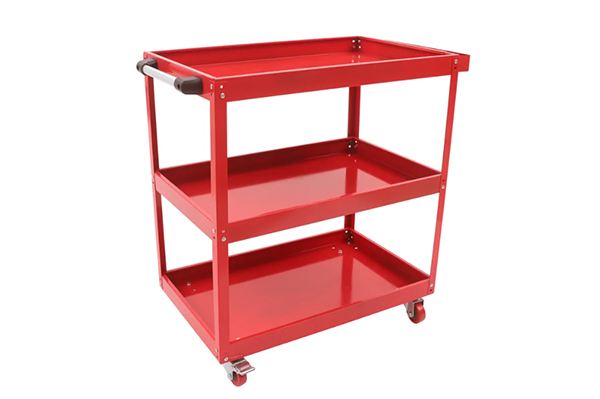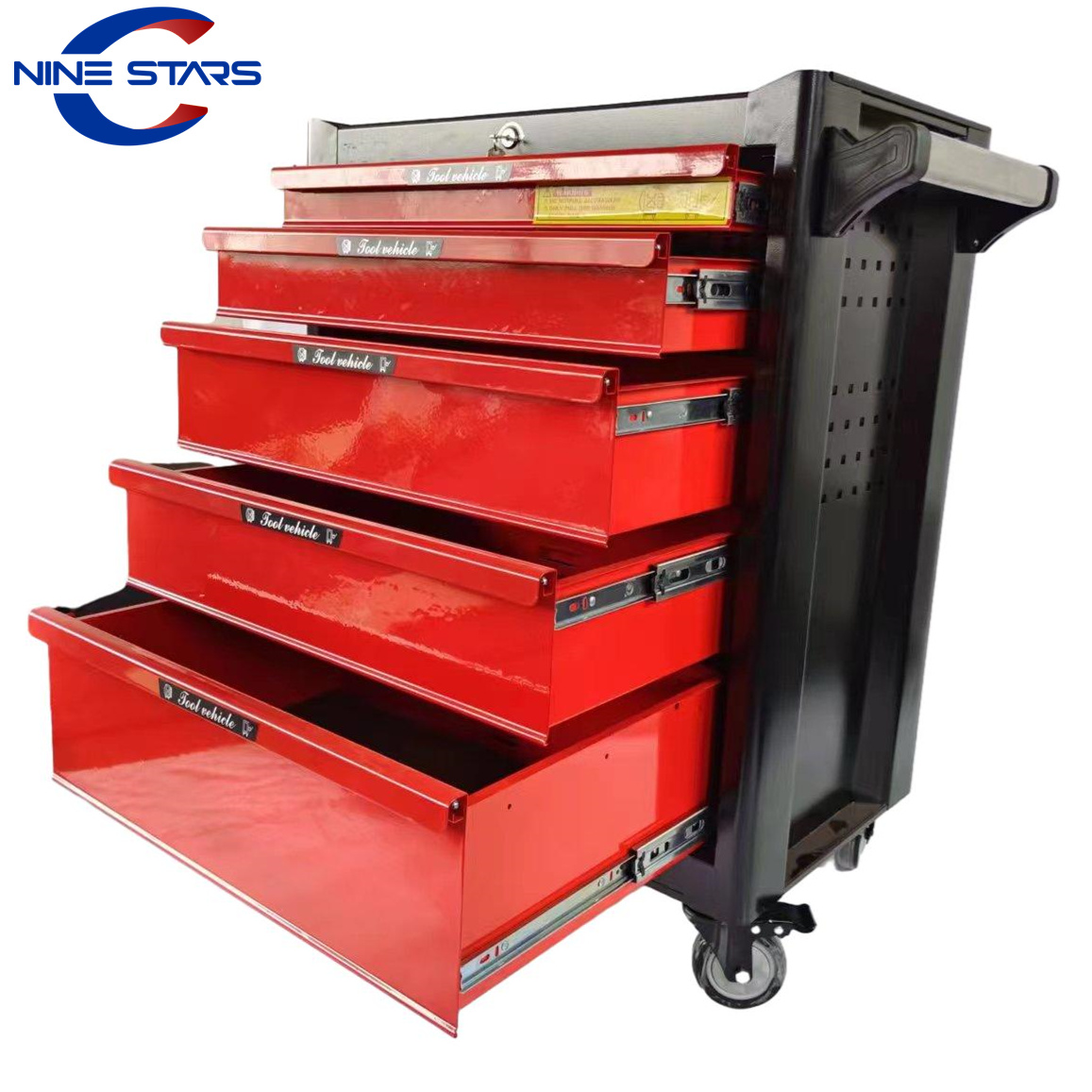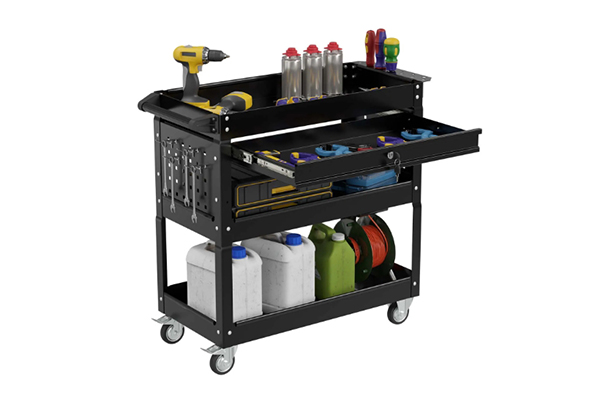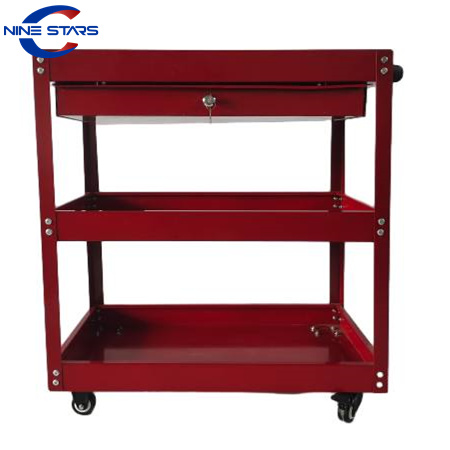Hello, I'm Allen. As the owner of a factory that has been manufacturing high-quality tool storage solutions for over two decades, I've spoken with thousands of business owners and procurement officers, like Mark Thompson from the USA. They all have one thing in common: they need reliable, durable equipment that gets the job done efficiently. While my expertise is in tool chests and cabinets, the principles of good design, strong materials, and user-focused functionality apply to all tools, including the humble but essential wheelbarrow. A good wheelbarrow or garden cart can make a world of difference in your yard, turning back-breaking labor into a manageable task. This guide is designed to walk you through everything you need to know to make a smart buying decision, ensuring you get the perfect tool for your needs.
Do you really need a wheelbarrow or a garden cart?
For anyone who manages a piece of land, whether it’s a small suburban garden or a large property, the answer is a resounding yes. Think about all the tasks you do: spreading mulch in flower beds, moving bags of soil or fertilizer, hauling away weeds or pruned branches, transporting heavy pavers for a patio project, or even mixing small batches of concrete. Doing these jobs by hand is slow, exhausting, and can lead to unnecessary physical strain.
A wheelbarrow is a force multiplier. It allows you to carry significantly more weight than you could in your arms, dramatically reducing the number of trips you need to make. This simple machine is one of the most useful and time-saving tools you can own for any yard work. When you get one, you’ll wonder how you ever managed without it. It's not just about convenience; it's about working smarter, not harder, to get the job done.
What's the real difference: Wheelbarrow vs. Garden Cart?
Though the terms are sometimes used interchangeably, a wheelbarrow and a garden cart are two distinct tools designed for different purposes. Choosing the right one will depend entirely on your property and the type of work you do. The primary difference lies in their design, stability, and how you operate them.
| Feature | Wheelbarrow | Garden Cart |
|---|---|---|
| Wheels | Typically a single wheel (or two wheels close together) at the front. | Usually has two or four widely-spaced wheels. |
| Operation | You lift the back two legs via the handles and push forward. | You pull it from the front with a handle, like a wagon. |
| Stability | Relies on the operator for balance; can be tippy with heavy loads. | Very stable due to its wide wheelbase; less likely to tip over. |
| Maneuverability | Highly easy to maneuver in tight spaces and on uneven ground. | Can be difficult to turn in narrow areas. |
| Unloading | Very easy to dump a load precisely where you want it. | Can be awkward to unload; some models have a dump feature. |
A wheelbarrow is perfect for navigating narrow garden paths, working on slopes, and for jobs where you need to dump materials like gravel or soil in a specific spot. A garden cart, on the other hand, is the champion of stability and is much easier to use on flat, open ground for hauling large, stable loads like firewood or bags of fertilizer.
One Wheel or Two: Which Wheelbarrow is the Best Choice?
Once you've decided a wheelbarrow is the right tool, the next question is: one wheel or two? This choice significantly impacts how the wheelbarrow handles.
A traditional single wheel wheelbarrow is the classic design for a reason. Its greatest strength is its agility. You can pivot it on a dime, navigate sharp corners, and cross bumpy terrain with relative ease. This makes it the superior choice for properties with varied landscapes and narrow pathways. The design also makes it incredibly simple to tilt forward and dump the contents accurately. The trade-off, however, is balance. You have to use more of your own strength to keep a heavy or unevenly distributed load from tipping over.
A two-wheel wheelbarrow is all about stability. With a wheel on either side of the basin, it’s virtually impossible to tip over sideways. This makes moving very heavy loads much easier on your arms and back, as you can focus purely on pushing forward rather than balancing. It's an excellent choice for people who may lack upper body strength or for those consistently hauling dense materials like brick or wet concrete. The downside is maneuverability; it requires a wider turning radius and can be cumbersome in tight spaces.

Which is the best wheelbarrow material: steel or plastic?
The basin of the wheelbarrow, also called the tray or tub, is where the tool meets the work. The material it's made from determines its durability, weight, and the type of jobs it's best suited for. The two most common options are steel and plastic.
A steel wheelbarrow is the workhorse of the construction site. It's incredibly strong and rigid, making it the best choice for hauling sharp, heavy, and abrasive materials like rocks, gravel, or broken concrete. A good steel tray will be made from a single sheet of heavy-gauge metal with no seams, which prevents weak points. The main disadvantage is that if the protective coating gets scratched, the steel can rust. They are also significantly heavier than their plastic counterparts.
A plastic (or poly) wheelbarrow is ideal for most garden and yard chores. Modern plastics are surprisingly tough and can handle heavy loads of soil, mulch, and other organic materials. Their main advantages are that they are much lighter, making them easier to lift and push, and they are completely rust-proof, which simplifies cleaning and maintenance. However, a cheap, thin plastic tray can become brittle in extreme cold and may crack under the weight of sharp, heavy rocks. For most homeowners, a high-quality plastic model offers the best balance of performance and ease of use.
How do you choose the right wheelbarrow size and volume?
Wheelbarrow capacity is measured in cubic feet, which tells you the volume of material it can hold. Choosing the right size is a balance between how much you want to carry in one trip and how much weight you can comfortably handle.
- 2-3 Cubic Feet: This is a smaller size, perfect for very light-duty garden work. It's easy to maneuver and store but will require more trips for larger jobs.
- 4-6 Cubic Feet: This is the standard range for homeowner and general-purpose wheelbarrows. A wheelbarrow of this size offers a good capacity for moving mulch or soil without being overly heavy or difficult to manage. Most residential projects can be handled with a wheelbarrow in this range.
- 6-10+ Cubic Feet: These are contractor-grade wheelbarrows designed for heavy loads and large-volume tasks on construction sites. While their large capacity is efficient, they can become extremely heavy when fully loaded, requiring significant strength to operate safely.
Remember, a bigger wheelbarrow isn't always better. A wheelbarrow filled with 6 cubic feet of wet soil can weigh over 400 pounds! Be realistic about what you can safely lift and push. It's often more efficient to take two manageable trips than one dangerously heavy one.

What type of tire should your wheelbarrow have?
The wheel and tire are arguably the most important components of your wheelbarrow. They bear the entire load and dictate how easily the wheelbarrow will roll across your property. The main choice you'll face is between a pneumatic (air-filled) tire and a solid tire.
A pneumatic tire is essentially a smaller version of a car or bicycle tire, with an inner tube that you fill with air. The air acts as a shock absorber, providing a cushioned ride that makes it much easier to roll over bumpy ground, roots, and rocks. This is the best choice for comfort and performance on varied terrain. The obvious downside is that, just like any air-filled tire, it can get a puncture and go flat, requiring you to patch the tube or replace it.
A solid tire is the maintenance-free alternative. Made from solid rubber, polyurethane, or hard rubber compounds, this type of tire will never go flat. This is a huge advantage for people who work around nails, sharp rocks, or thorny plants. The trade-off is a harsher ride. With no air to cushion the load, you'll feel every bump, and it can be physically harder to push across rough surfaces. The choice comes down to whether you prioritize a smooth ride (pneumatic) or zero maintenance (solid).
Are all wheelbarrow handles the same?
The handle is your direct connection to the wheelbarrow, and its design affects comfort and control. Traditionally, wheelbarrows have long, separate handles, one for each hand. The material used for these handles is important.
- Wooden Handles: Wooden handles have a natural flex and a comfortable feel. They absorb vibrations well and don't get as cold or hot as metal. However, if left exposed to the elements, they can splinter or rot over time.
- Steel Handles: Steel handles are extremely durable and sturdier than wood. They won't break or rot. They are often found on contractor-grade models. On the downside, they transfer more vibration to your hands and can be uncomfortable to grip in very hot or cold weather without gloves. Many now come with ergonomic rubber grips to improve comfort.
Some modern wheelbarrows feature a single, closed-loop handle, similar to a lawnmower. This style allows you to push or pull the wheelbarrow with one or two hands, offering more versatility in how you maneuver the load.
What are the different types of garden cart models?
If you determined that a garden cart would work best for your needs, you'll find a few different styles to choose from. Each model is designed with specific tasks in mind.
The most common type is a utility wagon cart. This style typically has four wheels, a flatbed, and removable sides. It's incredibly handy for hauling anything from stacks of firewood to multiple bags of fertilizer. You simply pull it by its long handle.
Another popular model is the dump cart. These carts often have two wheels and a tipping mechanism that makes unloading loose materials like soil or gravel a breeze. Many of these can be hitched to the back of a lawn tractor, allowing you to haul much larger and heavier loads around your property with minimal effort.
For those with limited storage space, a foldable garden cart is a fantastic option. These are typically made with a collapsible metal frame and a heavy-duty fabric bag. While they don't have the load capacity of a rigid steel or plastic cart, they are perfect for lighter garden tasks and can be folded up and stored in a shed or garage, taking up very little room.

How do you properly maintain your wheelbarrow?
A quality wheelbarrow is an investment, and with a little care, it can last for many years. Proper maintenance is simple and ensures your wheelbarrow is ready to go whenever you need a wheelbarrow. After each use, especially after working with corrosive materials like fertilizer or wet concrete, rinse out the tray and frame to prevent rust and degradation.
Periodically check the tire pressure if you have a pneumatic tire. An underinflated tire is much harder to push and can damage the wheel rim. For a solid tire, simply check it for excessive wear. It’s also a good idea to inspect the bolts that hold the frame, handles, and tray together, tightening them as needed. The axle that the wheel spins on may benefit from a bit of grease once a year to keep it rolling smoothly.
Storing your wheelbarrow out of the rain and sun will dramatically extend its life, protecting wooden handles from rot and plastic trays from UV degradation. Proper care for your wheelbarrow is just as important as organizing your smaller hand tools in a sturdy, portable tool box to keep them safe and ready for your next project.

Final Check: Choosing the Perfect Wheelbarrow for You
Choosing the perfect wheelbarrow or garden cart doesn't have to be complicated. By thinking through your specific needs, you can easily select a model that will serve you well for years to come. Run through this final checklist before you make your decision. Your answers will point you to the right tool and help you make a confident purchase. A great wheelbarrow makes all the difference when you need to move material and manage your garden and yard.
Key Takeaways
- Wheelbarrow vs. Cart: Choose a wheelbarrow for its maneuverability and ease of dumping on varied terrain. Opt for a garden cart for its stability and high capacity on flatter ground.
- Material Matters: Select a steel tray for heavy-duty construction tasks involving sharp, abrasive materials. A plastic tray is a lighter, rust-proof choice perfect for most garden and yard work.
- Size it Right: Match the volume (cubic feet) of the wheelbarrow to your physical strength and the scale of your typical projects. A standard 4-6 cubic foot model is great for most homeowners.
- Pick Your Tire: A pneumatic tire offers a smoother ride over rough ground but can go flat. A solid tire is maintenance-free but provides a bumpier experience.
- Handle with Care: Consider the comfort and durability of the handles. Wooden handles offer a nice feel, while steel handles provide maximum strength.
- Don't Forget Maintenance: Regular cleaning, checking the tire, and proper storage will ensure your wheelbarrow or garden cart lasts for a very long time.
Post time: 09-16-2025



